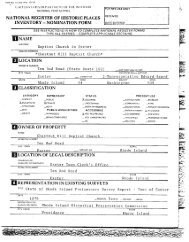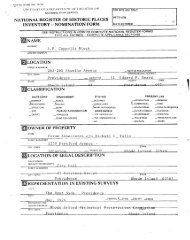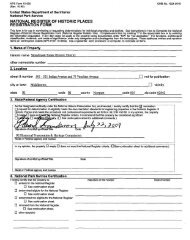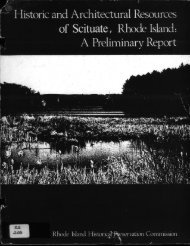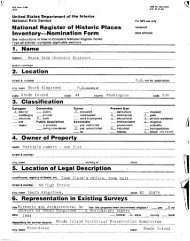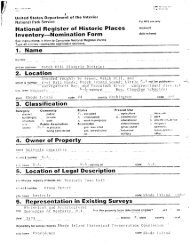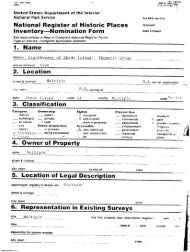1 Dr. Jonathan Prude, Emory University “The Great Transformation ...
1 Dr. Jonathan Prude, Emory University “The Great Transformation ...
1 Dr. Jonathan Prude, Emory University “The Great Transformation ...
You also want an ePaper? Increase the reach of your titles
YUMPU automatically turns print PDFs into web optimized ePapers that Google loves.
17Yet despite this ultimate diminuendo I’d contend that grappling with early, pre-1850,industrialization in this setting discloses a vital heritage. It discloses a confluence of changes--a<strong>Great</strong> <strong>Transformation</strong>--that permanently reconditioned this part of New England. At the sametime, the specific kind of economic enterprise highlighted in this story--the small, scattered,proprietary establishments including--indeed featuring--small, scattered, proprietary textilefactories proved a resilient and broadly applicable model for America. Long after 1850, and longafter much of the textile industry exited New England, a crucial core of the nation’s economicenergy lay in just such dispersed, modest, partner-run or minimally incorporated ventures. Andfinally, I’d suggest that the complex changes of early industrialization as I’ve sought to sketchthem here discloses a heritage of both benefits and losses that has also lasted. Because thegrowth of the Republic’s political economy throughout the 19th century and beyond has neverbeen something that should be only lamented or only celebrated as triumphant progress. It hasalways been what it was in the early mill towns of rural southern New England: an alloy ofadvantages and disadvantages, of empowerment to some and dislocations and disempowermentfor others, of winners and losers, of rising individual autonomy and weakened traditional tiesalong with (as I’ve tried to intimate) new group loyalties. Grappling with industrialization in thissetting invites us to appreciate the uneven, even contradictory, lessons of history.But now let me return--very briefly--to where I began and say a few words abouthistorians and preservationists. And the point I want to stress is again that the two groups shouldsee themselves as collaborating. I might suggest that what historians can offer preservationists isa heightened alertness to the contexts--the broader patterns and questions--into which the thingspreservationists curate can be slotted. I won’t suggest, I know, that what preservationists providehistorians--the gift to historians of how preservation works--are countless insights into how thisor that piece of history actually was. Even after my spinning wheel tutorial, my book on earlyNew England industrialization would have been richer had I had firmer grasp on what the familycottages of operatives were like or exactly how workers dealt with broken threads on a powerloom. In the final analysis, though, I think historians and preservationists should see themselves







